Superconductors - Definition, Examples, Quiz, FAQ, Trivia
Discover materials that conduct electricity with zero resistance!
What is a Superconductor?
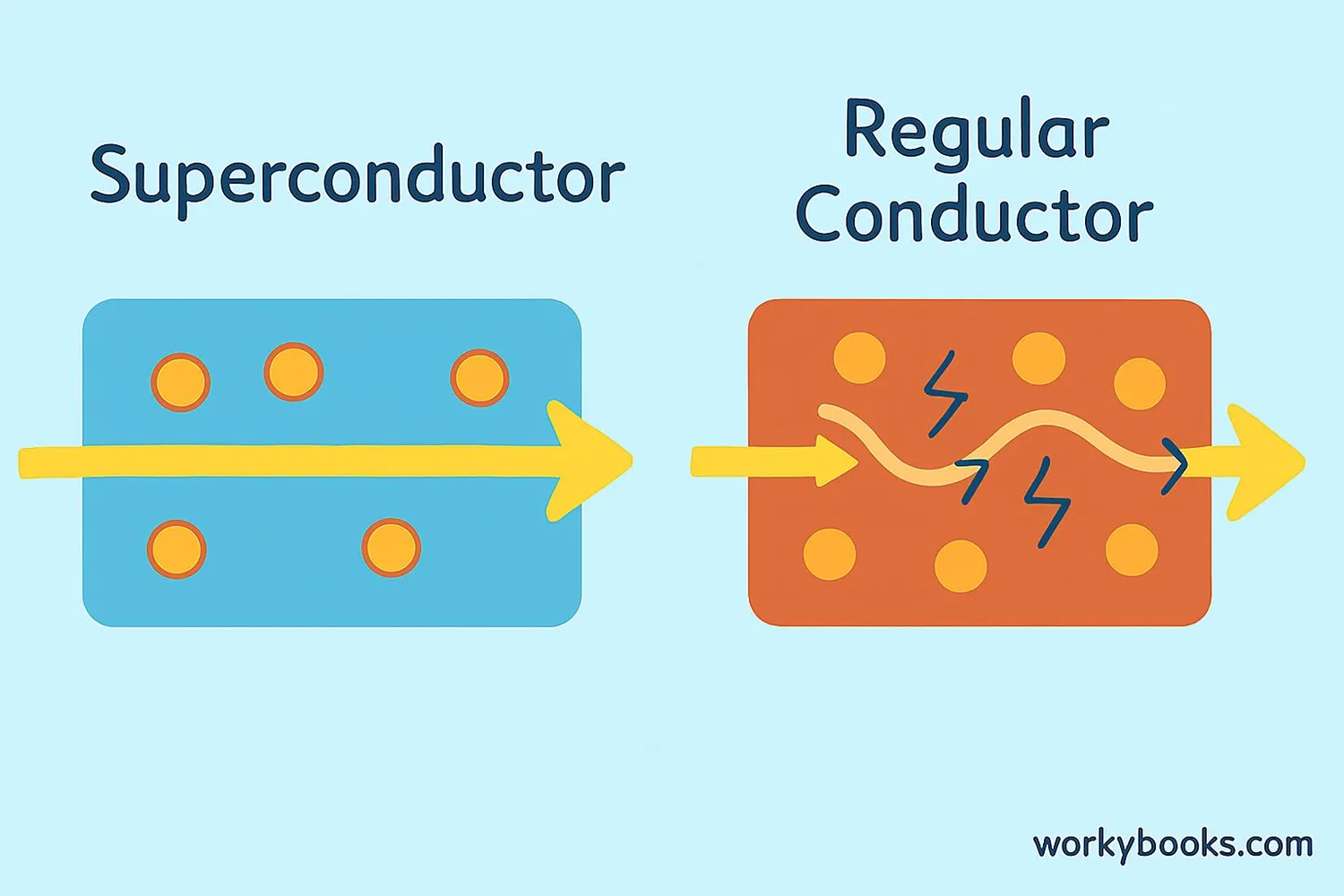
A superconductor is a special material that can conduct electricity with zero resistance! In regular materials like copper wires, electricity faces resistance that causes energy loss as heat. But in superconductors, electricity flows perfectly without any energy loss.
Imagine electricity as water flowing through pipes. In regular pipes, there are obstacles that slow the water down. But in superconductors, it's like a perfectly smooth pipe where water flows freely without any slowdown!
Science Fact!
Superconductors were first discovered in 1911 by Heike Kamerlingh Onnes when he cooled mercury to -452°F (-269°C)!
Critical Temperature
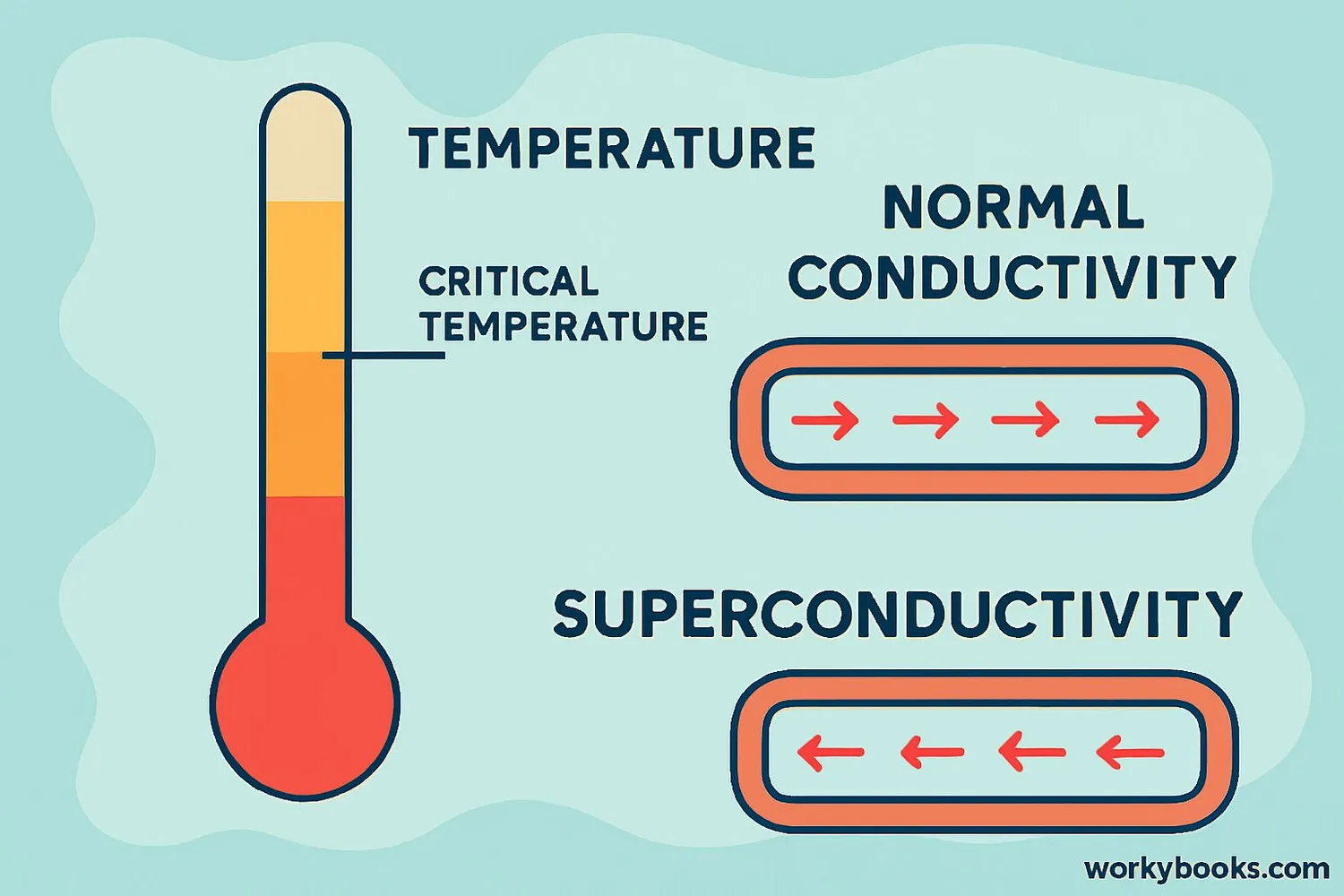
The critical temperature is the special temperature below which a material becomes superconducting. Above this temperature, the material behaves like a normal conductor with electrical resistance.
Most superconductors need extremely cold temperatures to work, often close to absolute zero (-459°F or -273°C). But scientists have discovered "high-temperature superconductors" that work at warmer (but still very cold) temperatures.
Normal State
Above critical temperature, material has electrical resistance
Transition
As temperature drops, resistance decreases
Superconducting
Below critical temperature, resistance becomes zero
The Meissner Effect
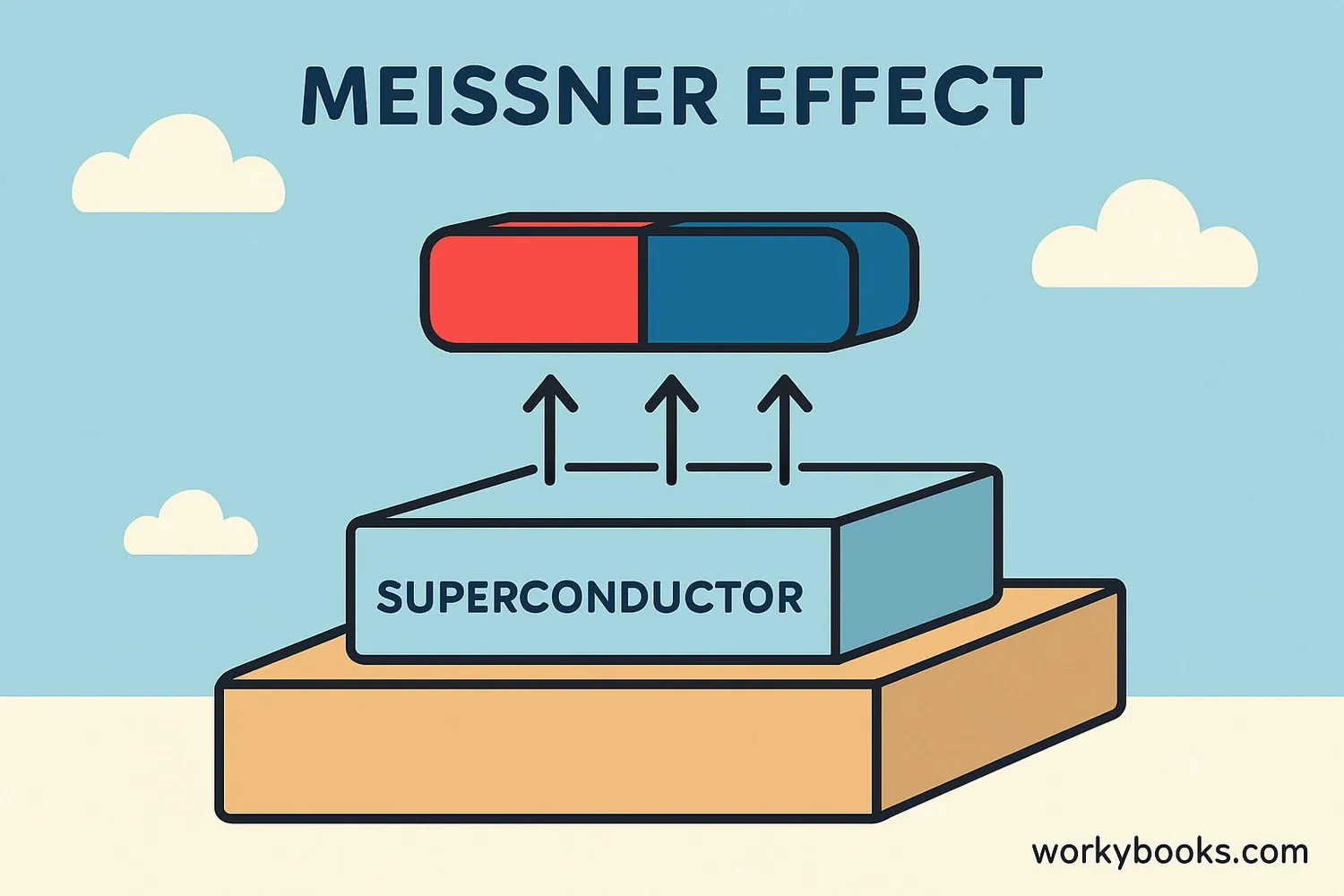
The Meissner effect is one of the most amazing properties of superconductors! When a superconductor is cooled below its critical temperature, it pushes out magnetic fields from its interior, causing magnets to levitate above it.
This happens because the superconductor creates currents on its surface that generate a magnetic field opposite to the applied field. This repulsion force is strong enough to make magnets float in mid-air!
Levitation Magic!
The Meissner effect allows maglev trains to float above tracks, reducing friction and enabling super-fast travel!
Types of Superconductors
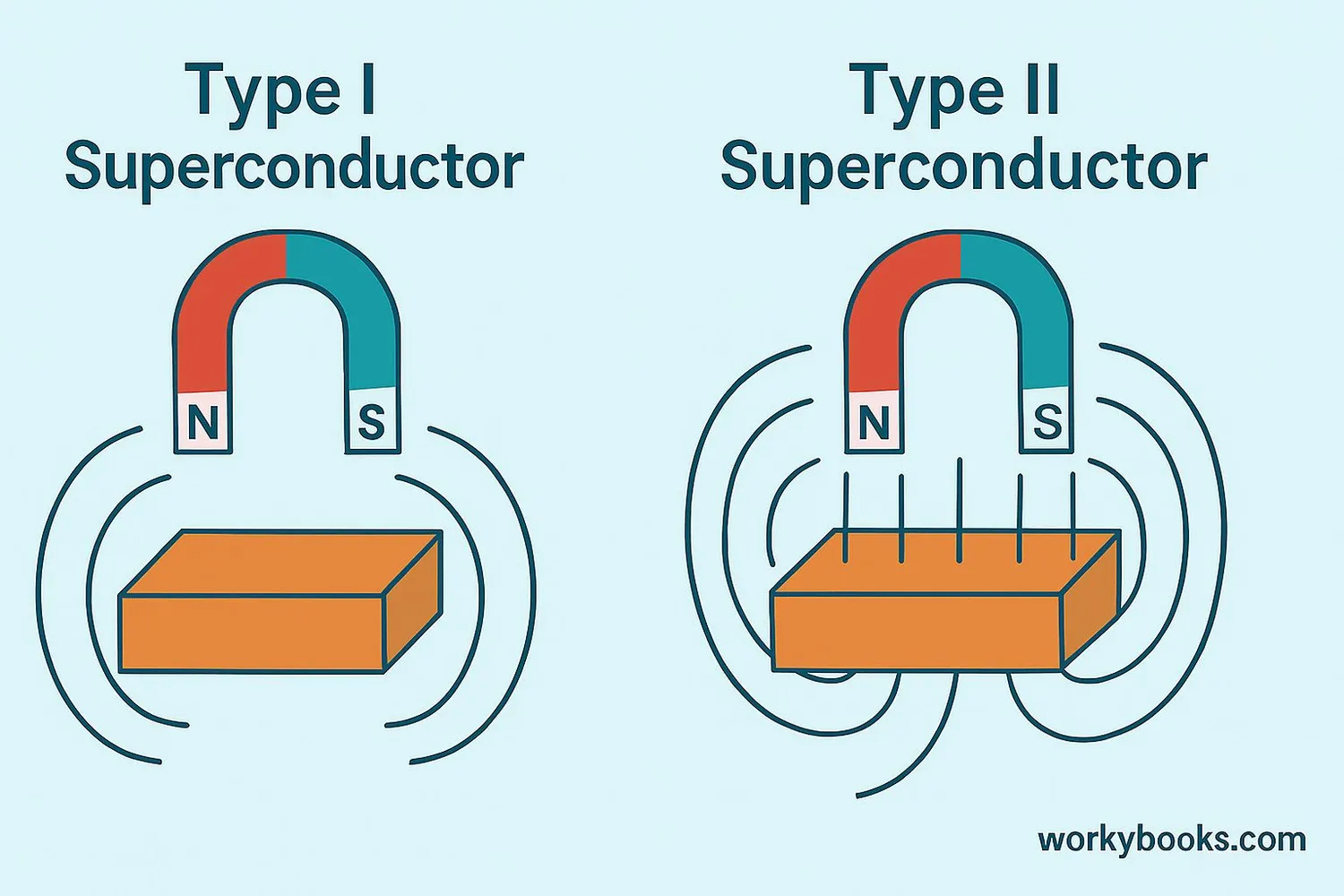
There are two main types of superconductors:
Type I Superconductors
Pure metals like mercury and lead
Exhibit perfect diamagnetism (Meissner effect)
Low critical temperature and magnetic field
Type II Superconductors
Alloys and complex compounds
Can withstand stronger magnetic fields
Higher critical temperatures
Used in most practical applications
Type II superconductors are more useful for real-world applications because they can carry more current and withstand stronger magnetic fields without losing their superconducting properties.
Applications of Superconductors
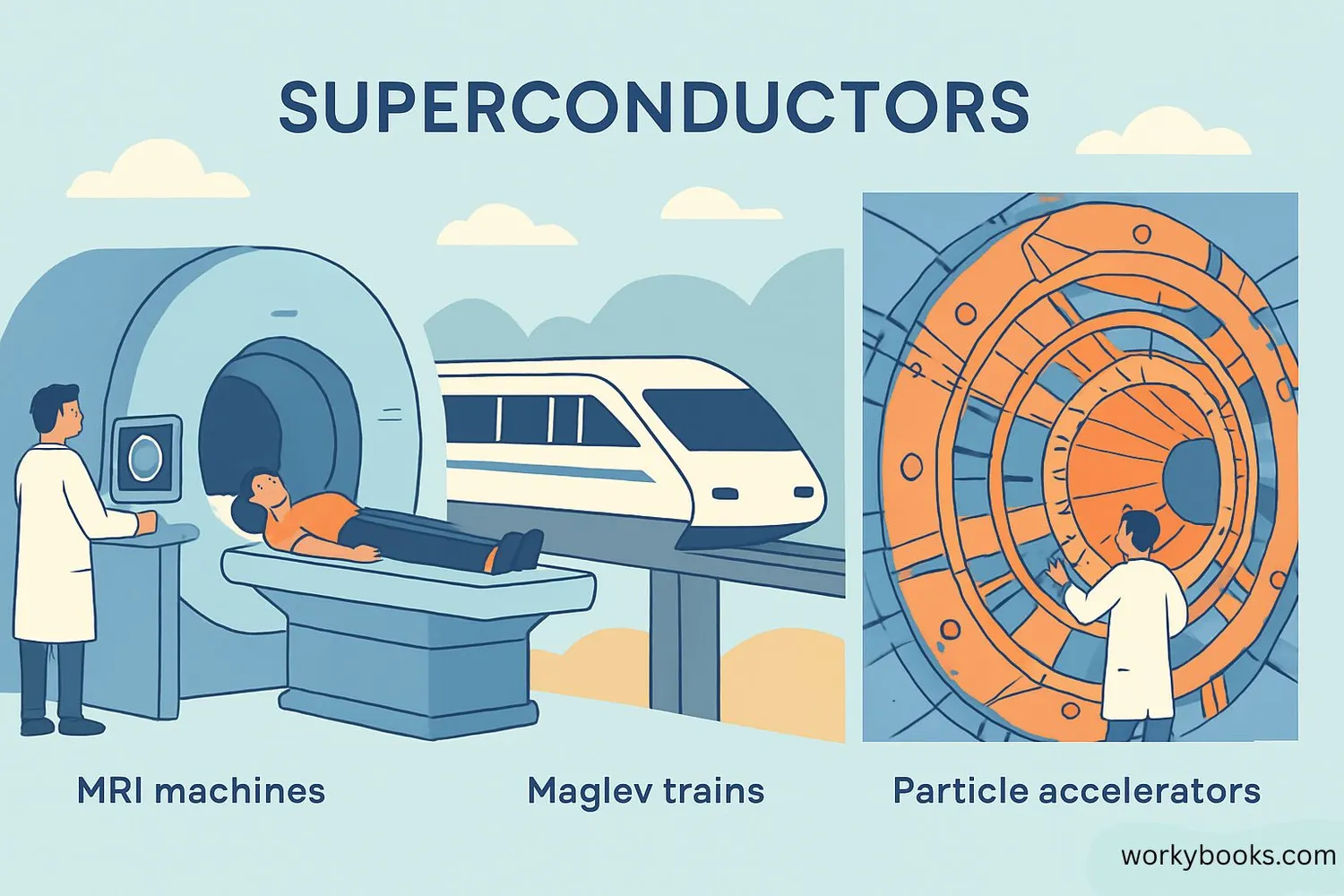
Superconductors have amazing applications in technology and science:
Maglev Trains
Trains that levitate above tracks using superconductors, reducing friction and enabling very high speeds
MRI Machines
Medical imaging devices that use superconducting magnets to create detailed pictures of our insides
Power Grids
Lossless power transmission over long distances
Scientists are working on high-temperature superconductors that work at temperatures easier to achieve, which could revolutionize energy technology!
Superconductor Quiz
Test your superconductor knowledge with this quiz! Answer all 5 questions to see how much you've learned.
Frequently Asked Questions
Here are answers to some common questions about superconductors:
Fun Superconductor Trivia
Discover some amazing facts about superconductors!
Extreme Cold
The coldest superconductor works at just 1.5°F above absolute zero! That's colder than outer space!
Speed Records
Maglev trains using superconductors hold the world speed record for trains at 375 mph (603 km/h)!
Powerful Magnets
Superconducting magnets can be 10 times stronger than ordinary electromagnets, making them perfect for MRI machines.
Space Applications
NASA uses superconductors in advanced sensors for space telescopes to detect extremely faint signals from distant stars.


